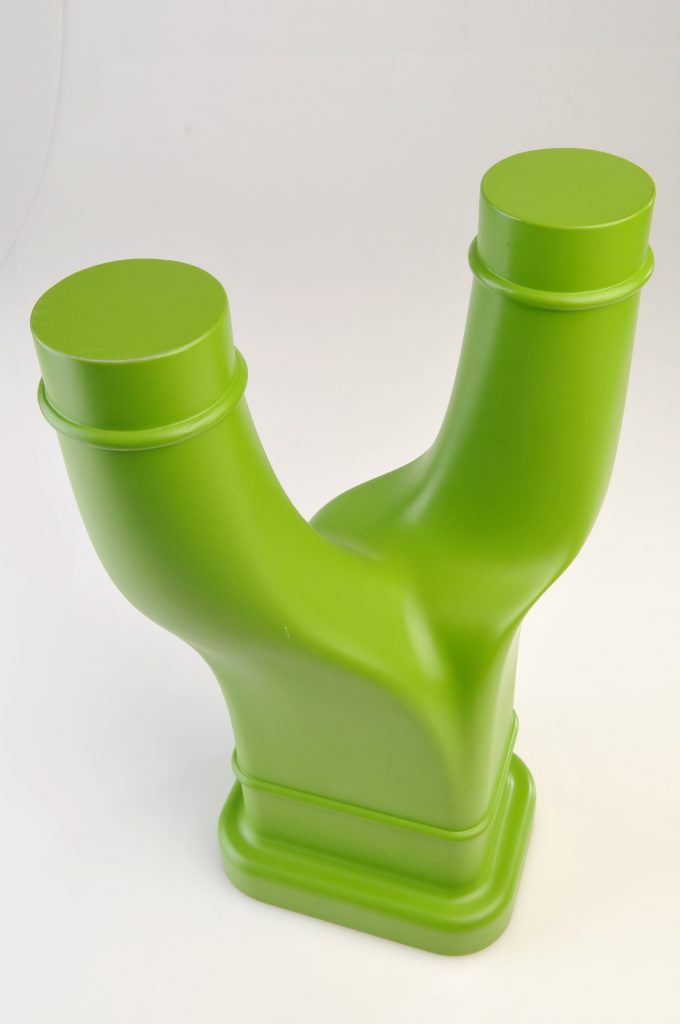Composite materials, such as those reinforced by carbon and glass fibers are invaluable to the production of high-performance components for automotive, aerospace and defense sectors. Though frequently made using more conventional methods, additive manufacturing is proving valuable when more complex, or hollow, carbon fiber components are required.
For hollow composite material components, the challenge is creating and accurately positioning sacrificial tooling, which is needed to create the core forms for composite layups. Often requiring multiple steps for completion, creating the core tooling is highly labor intensive.
A leader in binder jet additive manufacturing, ExOne frequently applies its systems in the production of sand casts and tooling for composite fiber components. Tackling the challenges faced by hollow composites in particular, the company has created a new method which makes 3D printed silica and ceramic sand tools easily removable in water. Remaining strong and robust throughout layup and autoclaving, the method has also been proven to enhance the properties of 3D printed tooling.

How 3D printed washout tooling works
First discovered by ExOne in 2013, the water “washout” capability of this method relies upon two key features: 3D printing sand or ceramic sand tooling with a binder that remains water soluble up to a temperature of 180°C. Additionally, the 3D printed form is coated with a critical and proprietary solvent that creates a smooth, impenetrable surface for the composite layup.
The tooling is used for the layup of composite materials, which are then autoclaved together. After autoclaving water is used to completely washout the dense tooling residue at the center of the composite part.
The simplicity of the washout method, and the complexity that it affords in part geometry, is enabling ExOne customers to realize designs that have been otherwise unsuitable for manufacture. Sikorsky, an American aircraft manufacturer and subsidiary of Lockheed Martin Company is one named client successfully using the method to create carbon and glass fiber composite components. Royal Engineered Composites, a manufacturer of aircraft secondary structures including access doors and fairings, is also employing the technique in its practice. According to ExOne CTO Rick Lucas, “We have customers creating new and longer mandrel parts, or even tools that have unique integrated hardware features with this.”

Minimizing autoclave distortion
Another benefit of ExOne sacrificial tooling is that it minimizes distortion created by the autoclaving process. To create dimensionally accurate parts and offset distortion, manufacturers need only select the material with most appropriate coefficient thermal expansion. ExOne, for example, offers a silica sand with a CTE of 20 ppm/°C. If this margin is too large however, a silica sand with a CTE closer to 3 ppm/°C can be used.
“Unlike other additive tooling materials,” Lucas explains, “the thermal expansion is also isotropic (x,y,z) resulting in high-quality predictable results.”
Post washout, the silica or ceramic sand recovered from the water can also be recycled in ExOne 3D printers. This remains a key USP for the method and the company’s clients. “One of the things our customers tell us is that they like the fact the washout is fast and complete,” Lucas adds, “We’re incredibly proud that our 3D printed washout tooling process is sustainable with little to no waste: All of the washed-out sand can be recovered and reused for future print cycles.”
Contact an ExOne representative to try 3D printed washout tooling.
For more of the latest 3D printing applications subscribe to the 3D Printing Industry newsletter, follow us on Twitter and like us on Facebook. Seeking jobs in engineering? Make your profile on 3D Printing Jobs, or advertise to find experts in your area.
Featured image shows hollow composite fiber parts created with 3D printed sacrificial tooling that washes out with tap water. Photo via ExOne



